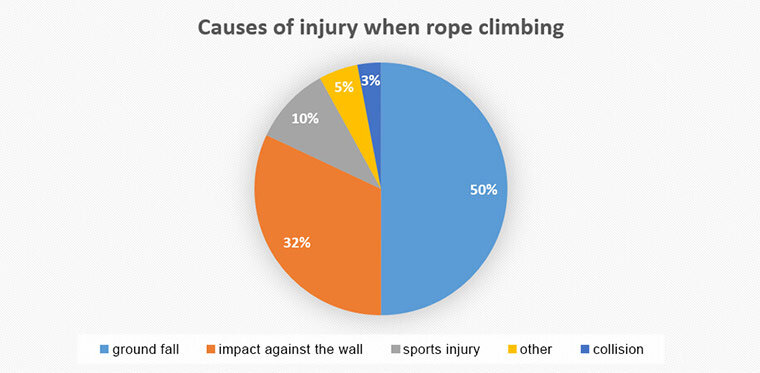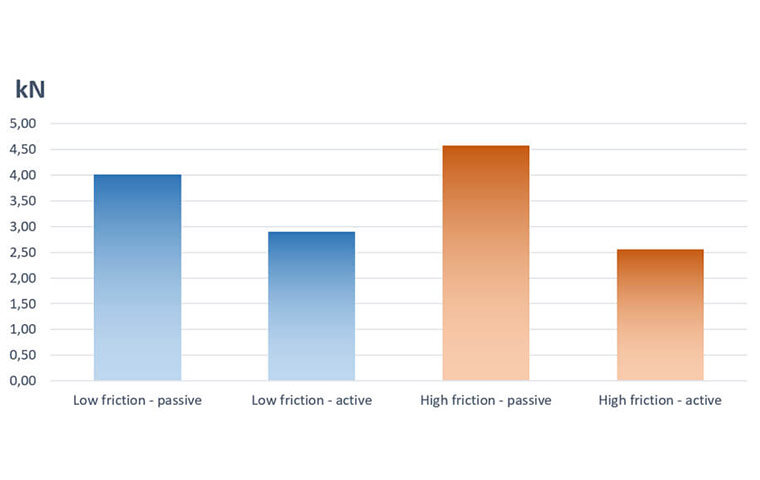Source: https://www.alpenverein.de/bergsport/sicherheit/unfallstatistik/kletterhallen-unfallstatistik-2018_aid_34127.html
Soft catches are therefore particularly necessary in situations of high friction or when the climber is much lighter to avoid injuries from impact.
Since assisted braking belay devices lack device dynamics, an active behavior of the belayer in the sense of increased body dynamics for soft catches. If the belayer jumps towards the fall at the right moment, the braking distance is increased, the fall is braked in a controlled manner, and the impact speed is reduced.
Test setup and comparison of the belaying techniques
To show that the behavior of the belayer is decisive for the impact force and the impact speed and not the friction in the system, we have compared four scenarios. We use a drop weight of 65 kg, the belayer also weighs 65 kg. The weight factor in our simulated rope team is therefore 1. The drop weight is lifted 1 m above the rope deflection, which is located at a height of 7.5 m. On most artificial climbing facilities this corresponds to the fifth quickdraw. The fall factor is approx. 0.26. (The belay device is located at a height of approx. 1 m, from there 6.5 m of rope to the deflection, and 1 m of rope that lifts the weight over the deflection. This results in a 2 m free fall divided by 7.5 m rope in the system). To keep the rope running through the device as little as possible, we use an active assisted braking device.
- In the first setup, the system is frictionless except for the rope deflection. The belayer behaves completely passively, i.e. does not react deliberately to the impact of the fall. We carry out this test three times and average the forces measured at the deflection. The resulting value is 4.0 kN.
- In the second setup, we keep the general parameters the same. This time, however, the belayer jumps off at the right moment, using body dynamics to reduce the impact force. The averaged value is now reduced to 2.9 kN. Body dynamics alone can, therefore, decrease the impact force by more than 25 %.
- In the third setup, we now want to investigate whether the system's rope friction or the behavior of the belayer has a greater effect on the impact force. In order to enhance friction, we put an OHM into the safety chain. The OHM generates a friction enhancement that corresponds to a weight force of about 20 kg, which effectively makes the climber about 20 kg lighter. As in the first setup, the belayer behaves completely passively. The average value after three attempts is 4.6 kN. The impact force at the deflection has therefore increased by about 0.5 kN compared to low-friction situations.
- The last setup is the same as the previous one, but this time again with an active behavior of the belayer, i.e. with the use of body dynamics. Surprisingly, an impact force of only 2.6 kN is generated here, less than with the same behavior in the low-friction situation. The measured braking distances are also lower than in the second setup.


